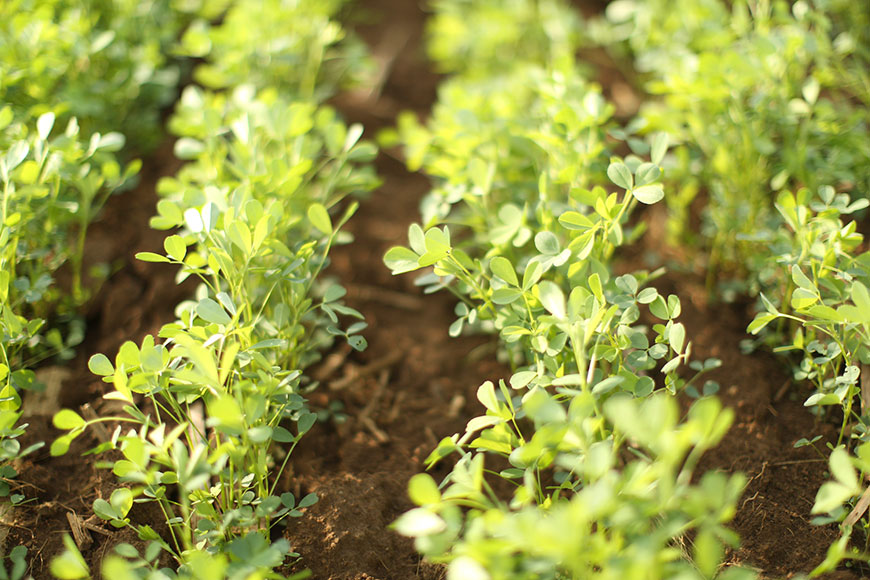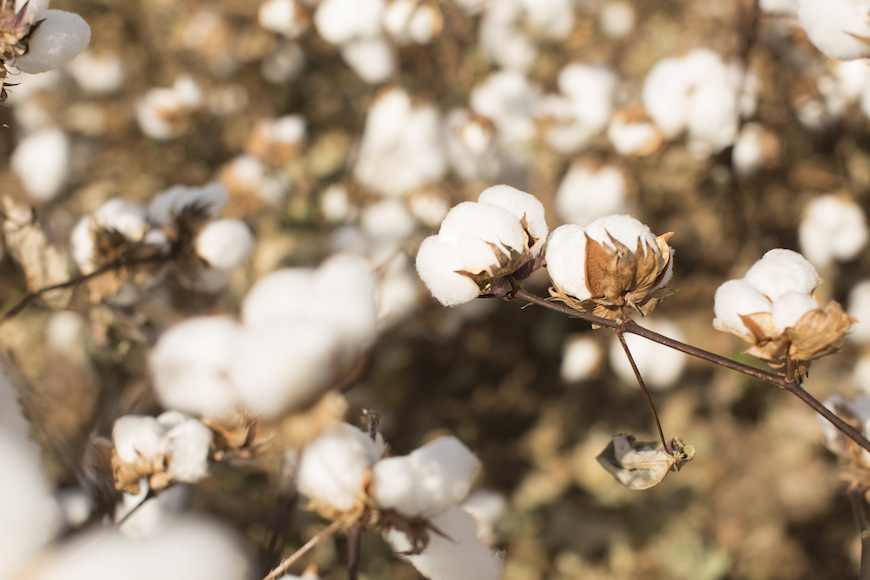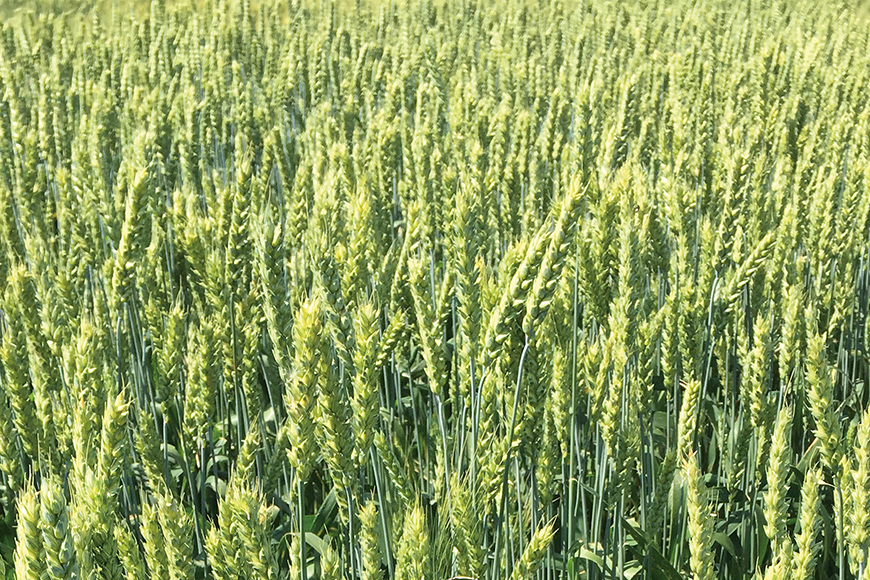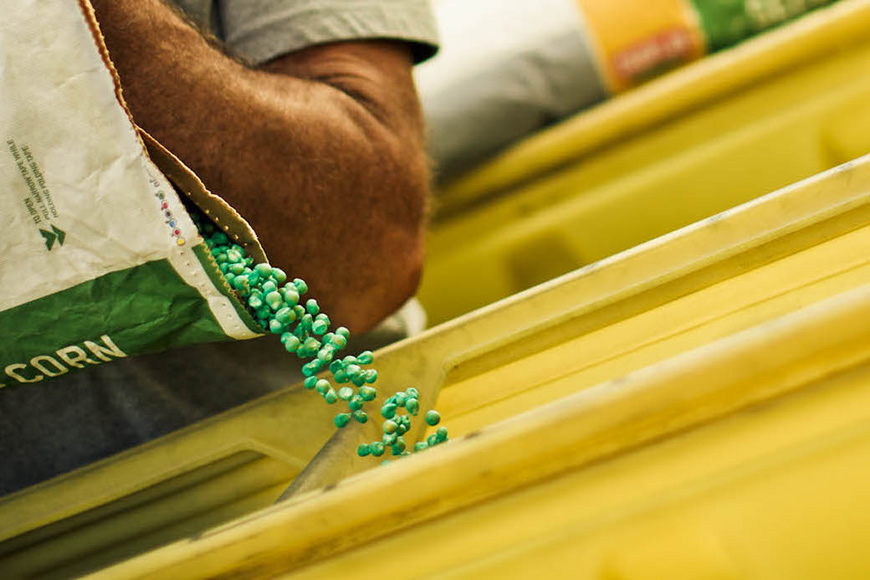Tips for Managing Late-Seeded Alfalfa

Has excessive spring rainfall kept you from seeding your alfalfa this year? You still may have time to establish an alfalfa crop later this summer.
If you are considering a late summer seeding this year, plan to seed at least six to eight weeks prior to the end of the season (the average frost date for your area). If you farm in Iowa or Nebraska, you can probably seed up until late August. Further south in Kansas or Missouri, you may be able to seed until early to mid-September.
Regardless of when you plant, it is essential that alfalfa seedlings have adequate time to establish a root system prior to winter. Earlier establishment means larger plants and larger first-crop yields. Remember that alfalfa needs to be planted much earlier than winter wheat.
For example, CROPLAN® alfalfa seed is treated with GroZone® plus Advanced Coating® Zn — a “full dose” of nitrogen-fixing rhizobium bacteria, a micronutrient package that includes zinc and manganese, a plant growth enhancer and two fungicides (Apron XL® fungicide and Stamina® fungicide). These components are combined to provide your alfalfa crop with an excellent start.
An application of glyphosate on Roundup Ready® Alfalfa can help you achieve excellent weed control. Other than a contact grass herbicide, DO NOT apply a fall herbicide other than glyphosate. Crop injury during fall can mean alfalfa will not be able to survive the winter.
For additional forage quality and flexible harvest options in 2020, planting an alfalfa variety with HarvXtra® technology will add greater harvest flexibility while controlling weeds using Roundup Ready Technology.
All photos are either the property of WinField United or used with permission.
© 2019 WinField United. Important: Before use always read and follow label instructions. Crop performance is dependent on several factors many of which are beyond the control of WinField United, including without limitation, soil type, pest pressures, agronomic practices, and weather conditions. Growers are encouraged to consider data from multiple locations, over multiple years, and be mindful of how such agronomic conditions could impact results. Advanced Coating®, CROPLAN®, GroZone® and WinField® are trademarks of WinField United. HarvXtra® is a trademark of Forage Genetics International, LLC. Apron XL® is a trademark of A Syngenta Group Company. Stamina® is a trademark of BASF Group. Roundup Ready® is a trademark used under license from Bayer Group.
If you are considering a late summer seeding this year, plan to seed at least six to eight weeks prior to the end of the season (the average frost date for your area). If you farm in Iowa or Nebraska, you can probably seed up until late August. Further south in Kansas or Missouri, you may be able to seed until early to mid-September.
Regardless of when you plant, it is essential that alfalfa seedlings have adequate time to establish a root system prior to winter. Earlier establishment means larger plants and larger first-crop yields. Remember that alfalfa needs to be planted much earlier than winter wheat.
Benefits of late-season alfalfa planting
There are a number of advantages to planting alfalfa in late summer/early fall. These include:1. Better distribution of workload.
In many regions, fall-planted cereal crops are becoming an important part of our cropping systems — as cover crops, forage crops or harvested as grain. Dairy and livestock producers are often looking for places to do mid-season manure applications. Late-summer alfalfa seeding that follows a cereal crop and manure applications could be a great summer option to help empty the pit.2. Reduced soil disease pressure in establishment.
Warmer and drier soils will have fewer wet soil disease concerns such as pythium, aphanomyces and phytophthora root rot. Of course, adequate water is needed for germination. However, during late summer, soils are typically warmer and drier compared to spring, and this provides excellent conditions for alfalfa germination and establishment.3. Yield advantage in the first production year.
Alfalfa production is highest in its second year. If alfalfa is spring seeded, farmers may get one or two lower-yielding crops off the field that seeding year. If alfalfa is planted in the fall, the first production year will yield almost as well as the second-year “maximum potential” because of earlier establishment.4. Potentially fewer insects.
Depending on where you are located, summer seeding your alfalfa may help minimize the risk of several insect pests during the initial establishment stage. For example, in the Midwest, by mid-August potato leafhopper populations tend to decline below the economic threshold.Tips for growing a successful crop
Planting and managing alfalfa in the late summer or early fall isn’t all that different from what you would do earlier in the season. But it always helps to remember the fundamentals. Here are some things to pay particular attention to.1. Check soil pH and fertility.
Alfalfa requires a neutral soil pH of 6.8 to 7.2. Ideally, low-pH soils should be corrected with lime one year prior to seeding. Some regions may have high soil pH, and alfalfa is generally very tolerant of moderate- to high-pH soils. When you get your soil test results back, also check potassium (K) and phosphorous (P) levels. For potassium, 150 parts per million (ppm) is the minimum level desired. For phosphorus, a minimum of 25 ppm is desired. Apply nutrients based on soil test results. Lack of ideal soil fertility and pH is really a cost, as it leads to lost production.2. Start with a cereal crop.
Planting alfalfa after a corn or soybean crop may not give alfalfa plants enough time to establish. As mentioned previously, alfalfa needs about six to eight weeks — or about 8 to 10 inches of growth — prior to a hard frost to undergo a process called contractile growth. This is when the plant forms a crown and transitions from being an annual to a perennial. Failing to achieve enough growth makes it less likely that plants will survive the winter.3. Plant treated seed.
It is important that alfalfa plants establish a good root system prior to winter. Much like other crops, alfalfa seed is offered with seed treatments. The ingredients in seed treatments help seeds absorb moisture quickly and ensure and protect germination during the establishment process. Alfalfa seed treatments contain key micronutrients and a plant growth enhancer.For example, CROPLAN® alfalfa seed is treated with GroZone® plus Advanced Coating® Zn — a “full dose” of nitrogen-fixing rhizobium bacteria, a micronutrient package that includes zinc and manganese, a plant growth enhancer and two fungicides (Apron XL® fungicide and Stamina® fungicide). These components are combined to provide your alfalfa crop with an excellent start.
4. Use a light tillage method.
Work out the wheel tracks, work in manure applications and crush the lumps. Do the minimum amount of tillage required to provide good seed-to-soil contact and remove weeds. Don’t use deep tillage like you would in the spring. Also, minimize depletion of soil moisture. One good rain may be all you get during your alfalfa establishment, so don’t waste water.5. Plant at the correct depth.
For summer seeding, make sure you plant alfalfa in the soil, not just on the soil. One-half to three-quarters of an inch below the soil surface is the ideal depth for summer seeding. I recommend using a grain drill type of machine rather than a surface broadcast seeding method. A drill can deliver precision planting for alfalfa. Ideally, you’ll need to establish about 25 to 35 plants per square foot.6. Control weeds.
Weeds need to be controlled in late summer even more than in spring. Because weeds can rapidly consume limited summer soil moisture, alfalfa seedlings competing with weeds for moisture and light will be weaker and smaller. Annual weeds, winter annual weeds and volunteer wheat all need to be controlled to save soil moisture.An application of glyphosate on Roundup Ready® Alfalfa can help you achieve excellent weed control. Other than a contact grass herbicide, DO NOT apply a fall herbicide other than glyphosate. Crop injury during fall can mean alfalfa will not be able to survive the winter.
For additional forage quality and flexible harvest options in 2020, planting an alfalfa variety with HarvXtra® technology will add greater harvest flexibility while controlling weeds using Roundup Ready Technology.
7. Avoid herbicide carryover.
Herbicide carryover from the previous corn, soybean or even wheat crop is becoming a significant concern. Alfalfa growers are often finding weak, stunted and uneven new alfalfa seedlings. Read and follow herbicide labels. Depending on the herbicide used on the previous crop, carryover can last from nine to 24 months, so be aware of the chemistry that you’ve used before you plant late-summer alfalfa. Do not talk yourself into the common notion that reduced rates reduce carryover risk. Newer chemistry does not work this way. Work with your agronomist to make sure you select the proper previous herbicide and that it’s safe to plant alfalfa. Plan accordingly.Building blocks to success
These steps all build upon each other. Paying attention to the planting date, managing soil moisture, planting treated seeds at the proper depth and controlling weeds may all be instrumental in helping get your alfalfa off to a great start later this summer. For additional information, visit the CROPLAN alfalfa website.All photos are either the property of WinField United or used with permission.
© 2019 WinField United. Important: Before use always read and follow label instructions. Crop performance is dependent on several factors many of which are beyond the control of WinField United, including without limitation, soil type, pest pressures, agronomic practices, and weather conditions. Growers are encouraged to consider data from multiple locations, over multiple years, and be mindful of how such agronomic conditions could impact results. Advanced Coating®, CROPLAN®, GroZone® and WinField® are trademarks of WinField United. HarvXtra® is a trademark of Forage Genetics International, LLC. Apron XL® is a trademark of A Syngenta Group Company. Stamina® is a trademark of BASF Group. Roundup Ready® is a trademark used under license from Bayer Group.






